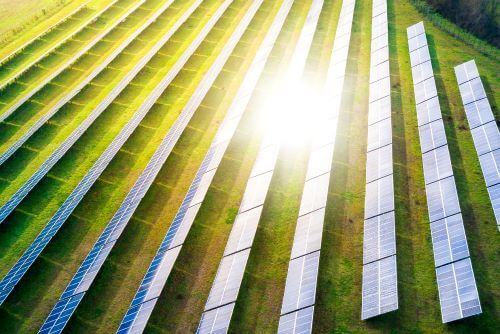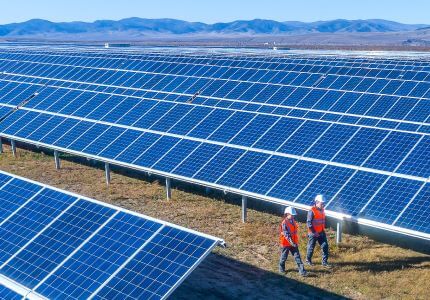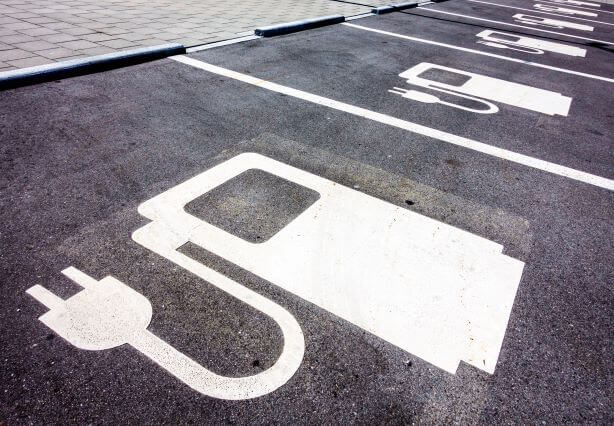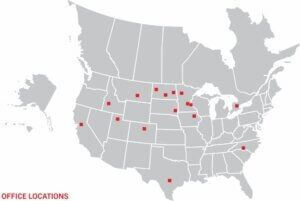The Inflation Reduction Act (IRA): A New Dawn for Renewable Energy Self-Development in Utilities

December 20, 2023
The Inflation Reduction Act (IRA) has introduced new dynamics to the utilities sector, particularly within Power and Renewables. As utilities scrutinize their strategic approaches to meet decarbonization targets, the IRA’s policy incentives bring a fresh perspective to the discussion, inviting the question: Could the IRA’s policy incentives be driving an increase in self-development of renewables by utilities?
The IRA’s Policy Incentives: A Game-changer
The IRA legislation offers a suite of incentives for utilities to consider when contemplating self-development of renewables. These include the transferability of the Investment Tax Credit (ITC) and Production Tax Credit (PTC), tax normalization and additional incentives relating to the remediation of coal sites.
Among the most consequential provisions within the IRA are Direct Pay and Transferability. Direct Pay enables tax-exempt entities, which traditionally cannot leverage the ITC/PTC, to receive a payment equivalent to the value of the eligible credits. Transferability, meanwhile, permits the entity that generated the tax credits to sell them to an unrelated third party.
These provisions provide eligible entities with an opportunity to generate tangible revenues from the PTC/ITC, making the self-development of renewable energy projects a more attractive proposition.
Furthermore, the Department of Agriculture has administered several grant programs, including Grid Resilience and Innovation Partnerships (GRIP), Empowering Rural America (New ERA), and Powering Affordable Clean Energy (PACE). These programs, specifically targeted at rural energy initiatives and projects, add to the incentives for self-development.
Renewable Generation Models: A Potential Shift on the Horizon
Traditionally, utilities have relied primarily on power purchase agreements (PPAs), with a lesser degree of emphasis on build/transfer or self-development. However, the landscape could change in the wake of the IRA. With the incentives now on offer, utilities have a renewed motivation to develop and own renewable energy projects.
Nevertheless, such a transition is not without its complexities. Project development and asset operations necessitate specific personnel and expertise. It is not a shift that a utility can execute overnight. Moreover, the ephemeral nature of federal programs, which can be subject to changes with political leadership shifts, adds another layer of complexity to the decision-making process.
Key Considerations and Challenges
Several factors come into play when utilities contemplate a move toward self-developed renewables. These include:
Expertise: Vertically integrated / “G&T” utilities have plenty of asset ownership and operation experience. However, intermittent resources offer a unique set of operating characteristics, requiring a distinct skill set from the personnel who will be responsible for these assets. This is especially critical given that these entities are ultimately responsible for reliability, service quality and grid integrity. Beyond the technical aspects, utilities must be prepared to consider the distinct benefits and limitations of renewable resources for functions such as project management, regulatory compliance and contract negotiations.
Policy Changes: The incentives provided by the IRA are attractive, but they are also subject to change. Political shifts can lead to modifications or even the elimination of these incentives. Utilities must consider the potential risk of investing heavily in self-development, as these incentives could be scaled back or eliminated.
Financial Risk: Developing and operating energy projects always involves financial risk. Projects can face cost overruns or delays, and the performance of wind and solar can depend on, literally, the weather. Utilities must assess their risk tolerance and capacity to absorb potential financial setbacks.
Model Evaluation: The decision to self-develop renewables must include a careful evaluation of the different models of renewable generation. Each model, whether it’s a PPA, build/transfer, or self-development, has its pros and cons. The decision should be based on a comprehensive understanding of these trade-offs.
Looking Ahead: Future Market Factors
The IRA offers a promising avenue for utilities to explore self-development of renewables. However, this decision warrants meticulous consideration and strategic foresight. With a judicious approach, utilities can harness these incentives to fulfill their decarbonization goals and contribute significantly to a cleaner, more sustainable future.
Ulteig is ready to partner with you as you navigate these complex decisions. We can clarify the intricacies of the development process and the kind of expertise required, equipping utilities with the essential information needed to help you make informed decisions.
Leverage our deep understanding of the power and renewables sectors and our commitment to sustainable energy to your advantage. For a deeper exploration of how we can support you in your journey toward self-developed renewables, connect with us today, or contact John Fernandes, Policy Director at Ulteig, for more information
Together, we can shape the future of energy.
WHAT MAKES ULTEIG DIFFERENT?
From global energy producers to locally funded cities and private developers to government agencies, the clients we serve encompass a broad range of relationships and projects. Find out why Ulteig is a leader in the engineering industry.
Contact Us



